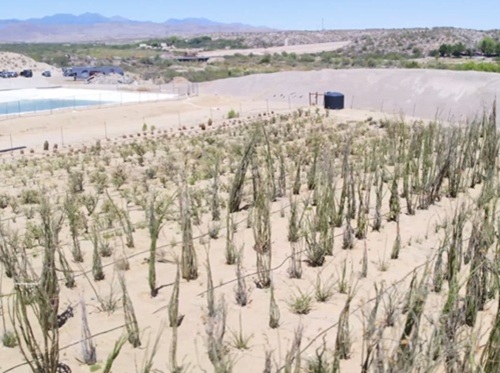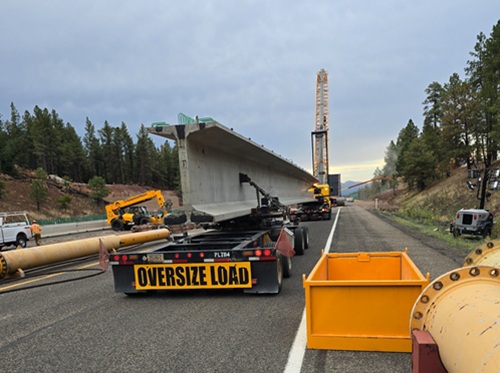The Arizona Department of Transportation recently highlighted how one of the first steps in a project to widen US 93 near the town of Wikieup involved removing thousands of ocotillos, cactus, and other plants in the path of a newly divided highway.
[Above photo by the Arizona DOT]
The agency explained those native desert plants – more than 3,000 in all – weren’t obstacles to be discarded. Rather, their removal is only temporary as they’ve been carefully set aside to rejoin the desert landscape to help the landscape heal more quickly while minimizing the impact of this four-mile-long roadway construction project on the local environment.
“The goal is sustainability, visual integrity, and to continue the habitat for both wildlife and insects,” noted LeRoy Brady, Arizona DOT’s chief landscape architect, in a statement.
[Editor’s note: Salvaging native plants has been an important part of many Arizona DOT projects since the 1980s, including projects to widen Loop 101 in Scottsdale, the Loop 202 South Mountain Freeway and other improvement projects along US 93 between Wickenburg and Kingman.]
The US 93 project is saving ocotillos and about 15 species of cacti, the agency said – including barrel cactus, hedgehog cactus, Christmas cholla and staghorn cholla. They were removed when construction work began in early 2025 and have been cared for at a temporary nursery in the project area.
An irrigation system has kept the plants watered until their return along the new roadway, Arizona DOT said, with some plantings set to take place in early 2026 and the rest when the project nears completion in early 2027.
[Editor’s note: Across the country, state departments of transportation are involved in similar environmental activities, from maintaining flower beds for pollinators to planting trees in remembrance of fallen highway workers.]
The salvage efforts began with a survey of the plants to determine which species and individual plants were good candidates for saving based on decades of Arizona DOT’s experience with other plant relocation projects.
For example, that means knowing medium-sized ocotillos have high survival rates and are worth carefully digging up to store in the nursery.
“When you build a road, you want to keep as many of the plants as you can,” explained Robert Winrow, the Arizona DOT resident engineer who oversees the US 93 widening project. “The ultimate intent is to make it look like the road was always there.”
The plant restoration process will also include using a diverse mix of 25 to 30 native seed types where the ground was disturbed – with those seeds “customized” to that biological zone’s temperature, rainfall, and soil type, the agency said.
Those seeds range from grasses to perennials that will help control erosion, support pollinators, and just plain look good to motorists passing through. The diversified native re-vegetation through seeding will help prevent non-native invasive plant species from infesting the project area.
While some of the native plants that will sprout from seeds and the transplants, such as hedgehog cactus, won’t be visible to motorists passing by at 65 mph, they’re just as important as the largest of the ocotillos that will rejoin the landscape as a diversity of plants is important to insects, birds, and other wildlife.
“Some things are hard to place a monetary value on but you do it because it all fits together,” Arizona DOT’s Brady said. “It’s a piece of the puzzle.”




